Discover Korea
Experience the extraordinary atmosphere of South Korea, a beautiful country, whose landscapes enchant with incomparable beauty, an unique cuisine surprises with original flavours and cities attracts tourist from all over the world.
Experience the extraordinary atmosphere of South Korea, a beautiful country, whose landscapes enchant with incomparable beauty, an unique cuisine surprises with original flavours and cities attracts tourist from all over the world.

Gyeongbokgung Palace was the main legal residence of the royal family during the Joseon dynasty. Carrying the meaning of “a place where the new king can enjoy prosperity of great blessings,” this was the first palace built during the Joseon dynasty. The palace is unique for its layout of buildings over a vast area, and is the only palace to have all four major gates still remaining to this day.

A representative attraction of Seoul, Bukchon Hanok Village shows the charm of Korea’s traditional buildings. Previously being the neighborhood where relatives of the royal family lived, the hanok here are grand, providing beautiful scenes down every lane.

The area of Myeong-dong is filled with unique street foods and plenty of things to see! A district of fashion and shopping, many young Koreans and international tourists seek out great deals and the latest trends. The streets are lined with department stores, duty free stores, and various brand shops.

Known as the “Sunrise Peak”, this 180 meters UNESCO World Heritage Site is great if you are looking to capture the perfect Korean sunrise photo. Seongsan Ilchulbong is actually an extinct volcano formed out of an eruption some 10,000 years ago.

Seoul’s landmark attraction is none other than Namsan Seoul Tower, located atop Namsan Mountain in the center of the city. The tower draws in visitors year-round, and is most famous for its nightscape view of the city. The tower features not only an observation deck, but also atmospheric cafés and restaurants among other facilities.
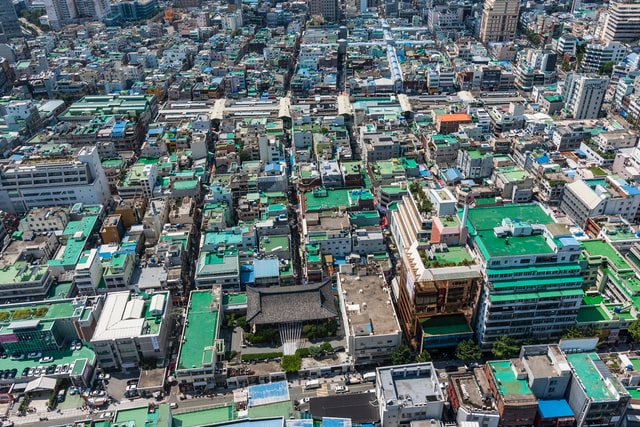
Home to majestic mountains, glistening beaches, steaming hot springs and fantastic seafood, South Korea’s second-largest city is a rollicking port town with tonnes to offer. From casual tent bars and chic designer cafes to fish markets teeming with every species imaginable, Busan has something for all tastes.
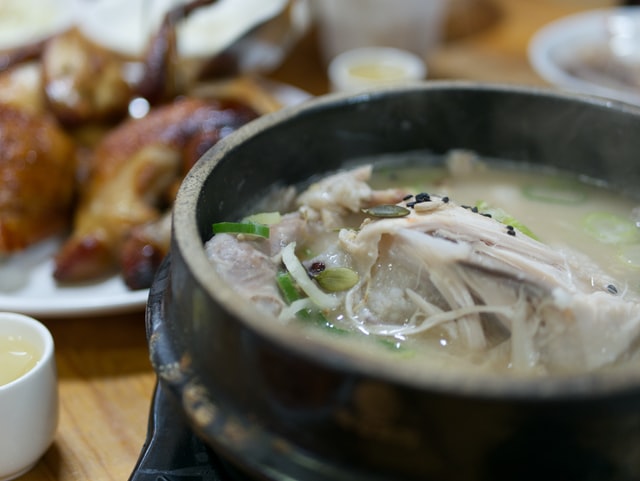
A common dish particularly during the summer, samgyetang is a traditional soup made of chicken, garlic, rice, scallion, Korean jujube, Korean ginseng, and spices. It is known to have a high nutritional value. Not only is it known for its healthy contents but it also is popular simply for its creamy and meaty flavor.
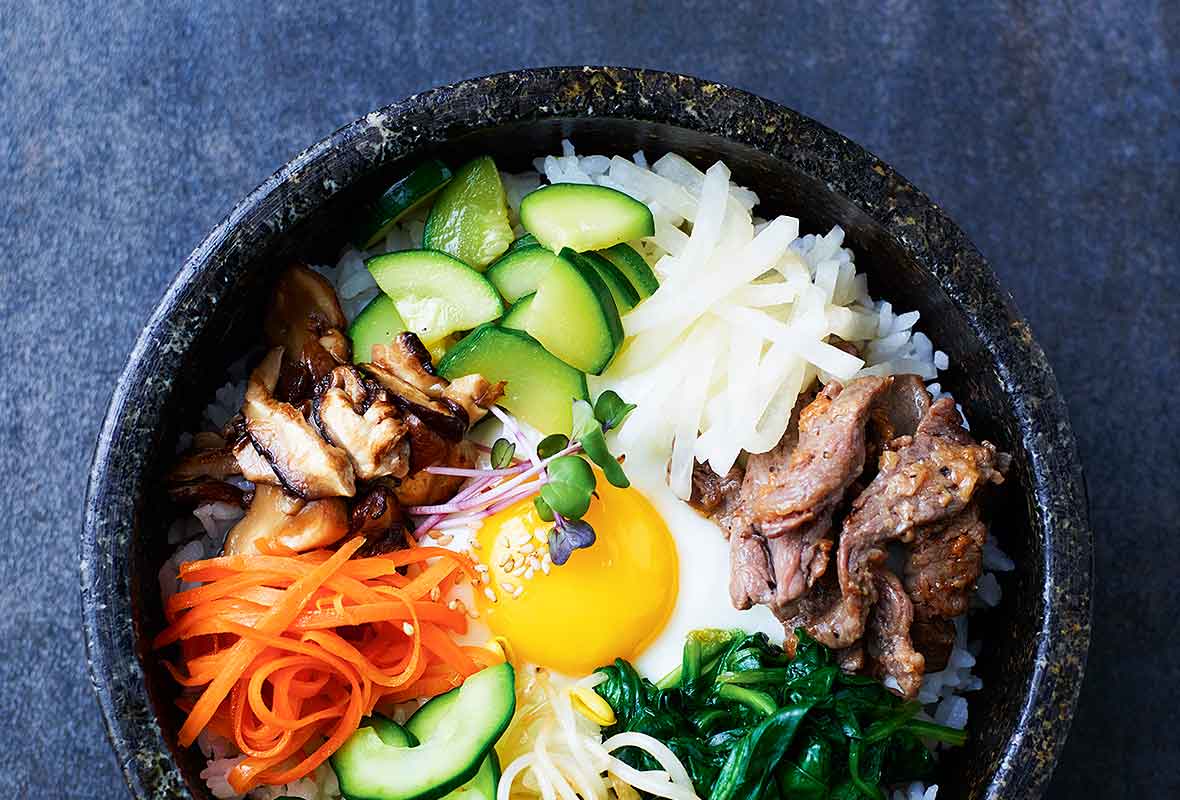
Bibimbap is essentially a bowl of mixed ingredients including, but not limited to, rice, namul (seasoned and sautéed vegetables), mushrooms, beef, soy sauce, gochujang (chili pepper paste), and a fried egg. The ingredients found in bibimbap vary by region, and the most famous versions of the dish are found in Jeonju, Tongyeong, and Jinju.
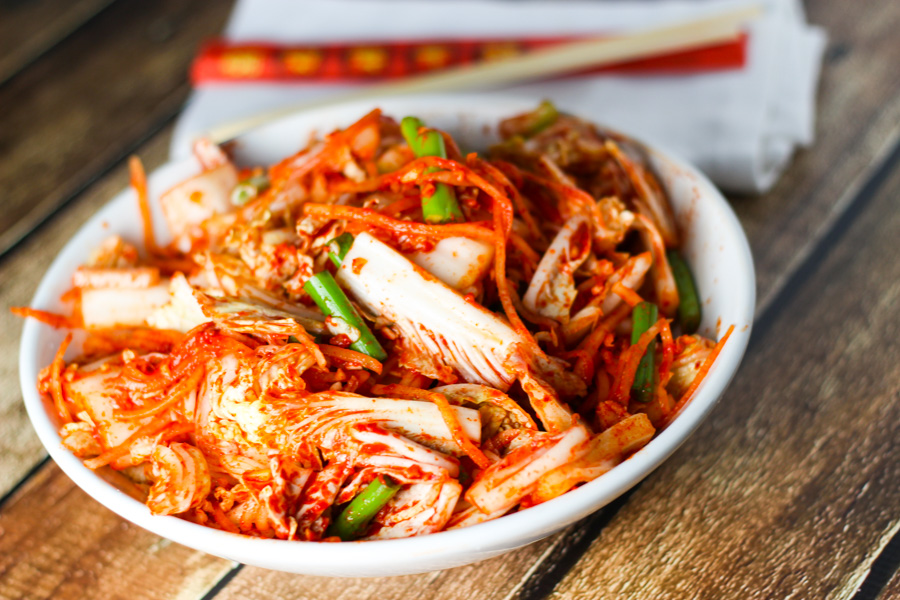
One of the oldest and probably the most essential dishes in Korean cuisine, kimchi is a spicy and sour dish made up of fermented vegetables. It is prepared with various kinds of ingredients, but the most common main ingredient is cabbage. Kimchi is popular among foreigners for its unique flavor, as well as its high nutritional value, fiber content and low calorie content. However, for Koreans, it is most popular due to its significant cultural value. Without kimchi, dinner is considered incomplete.
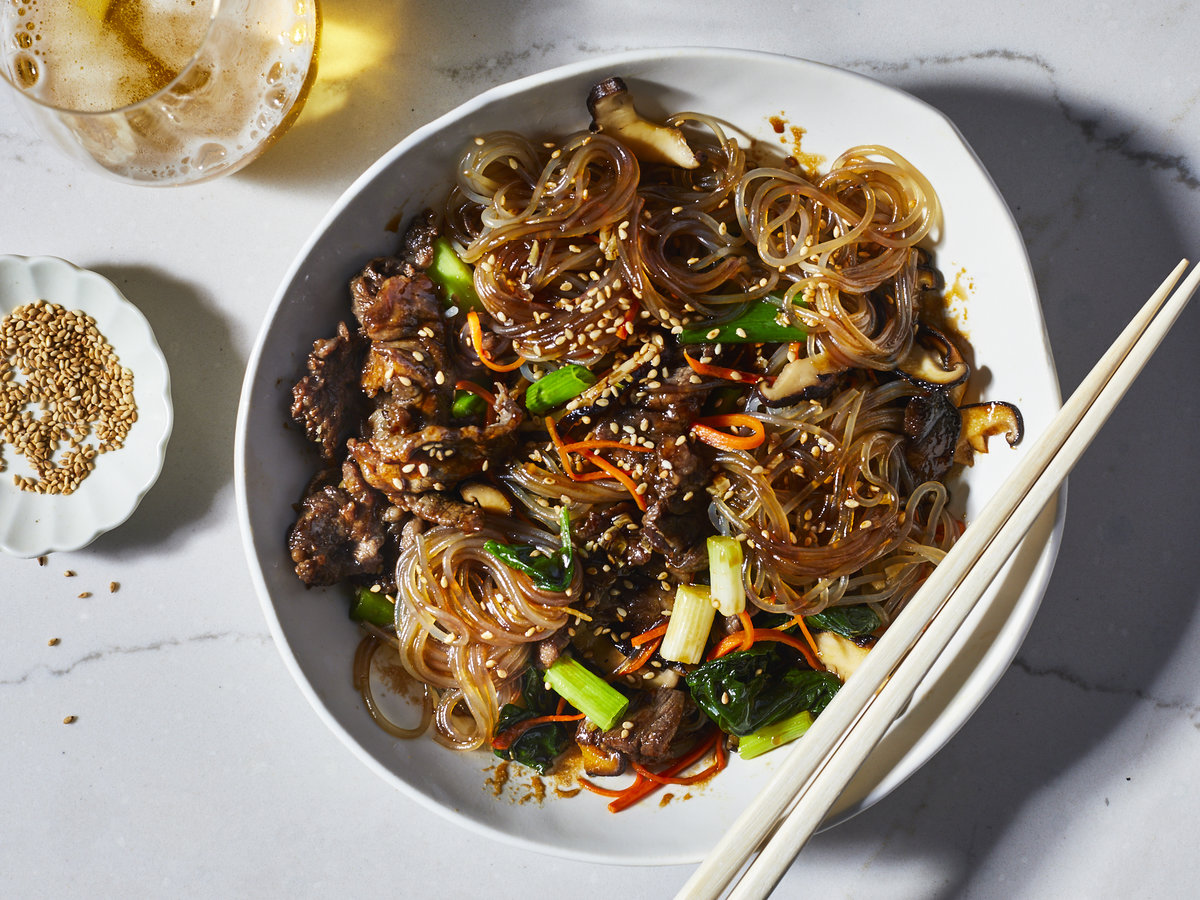
Often served as a side dish during lunch or dinner, japchae is a traditional Korean noodle dish made up of stir-fried sweet potato, thinly shredded vegetables, beef, and a hint of soy sauce and sugar. Depending on the chef, additional ingredients like mushrooms are added to the mix. Japchae is known for its sweet and flavorful taste and its soft yet slightly chewy texture.

Sikye is a traditional Korean rice drink that’s as sweet as it is traditional – so sweet, in fact, that it’s often served as a dessert! This Korean drink contains cooked rice, which gives it an interesting texture as you get to the bottom, and has been served in Korean for centuries as a traditional end to a meal.
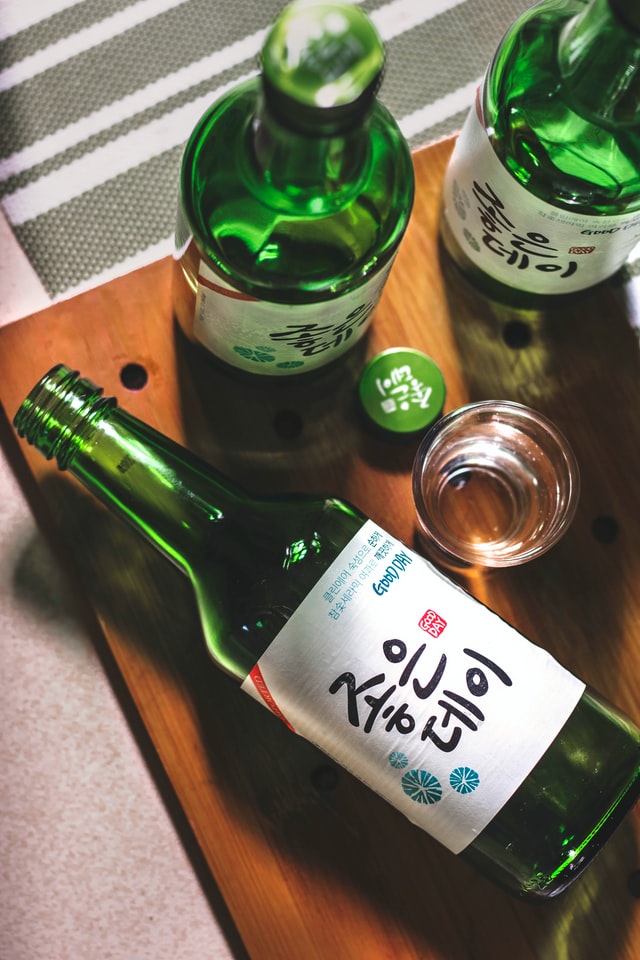
Korean soju is distilled from fermented rice, or optionally wheat, barley, sweet potatoes, or tapioca. It is usually enjoyed well-chilled, served in small traditional glasses, but Koreans also prefer to drop a shot of soju in beer. Apart from the classic type, it also comes in many fruit-flavored versions.
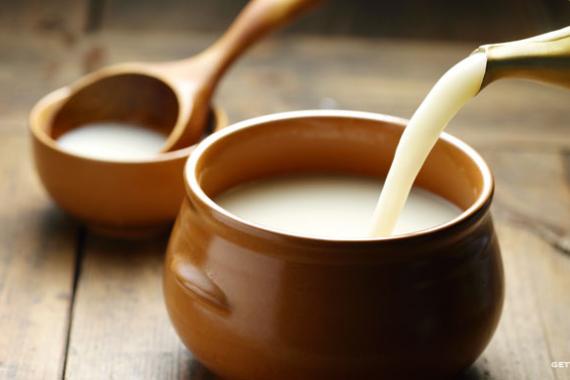
Makgeolli is the oldest Korean liquor that dates back to the 10th century. It is usually made from rice which is fermented with nuruk—traditional Korean starter. The fermentation process produces a lightly fizzy drink with a typical milky appearance and a slightly sweet flavor.
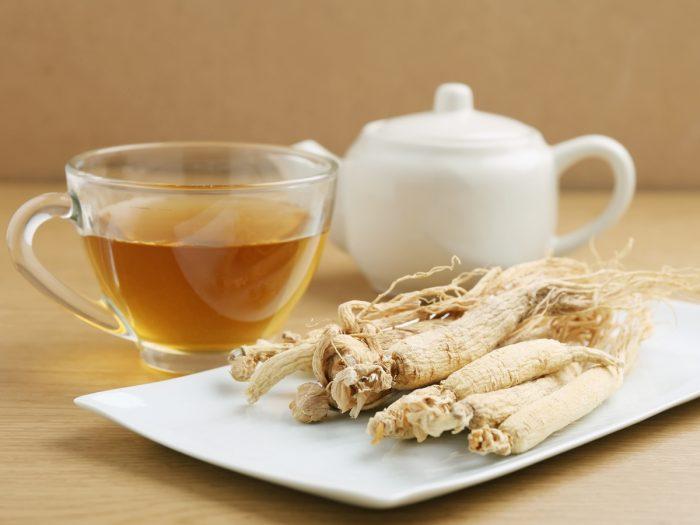
Ginseng tea is a traditional Korean tea made with ginseng. While it is called a tea, ginseng tea does not contain tea leaves. It is a herbal tea infusion made out of the ginseng plant's root. In Korea ginseng tea is far more than a drink. The Korean culture has a long history of treating food and drink as medicine; spices and herbs are regularly used to treat sickness and ailments.
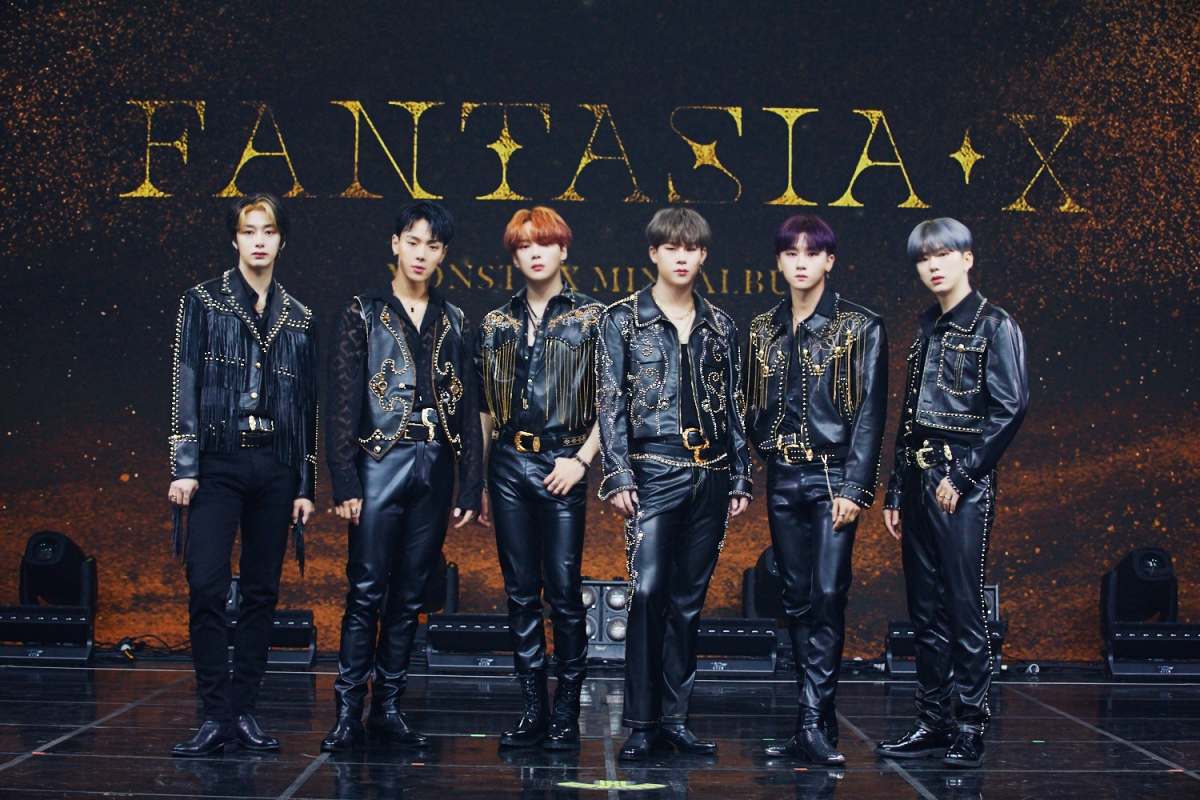 One of the most popular k-pop bands - Monsta X.
One of the most popular k-pop bands - Monsta X.
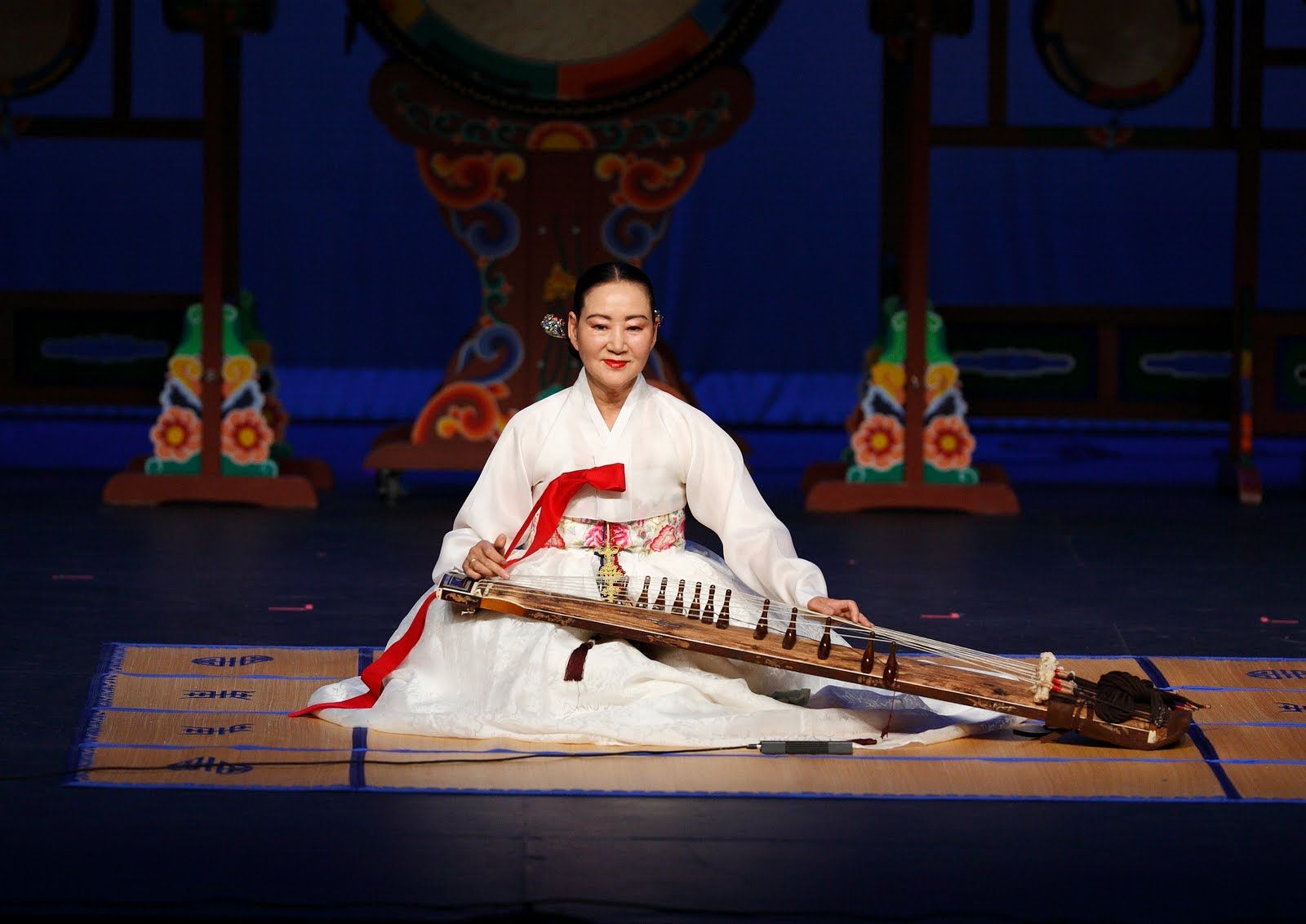 Musician playing a komungo, a type of Korean zither with six strings.
Musician playing a komungo, a type of Korean zither with six strings.
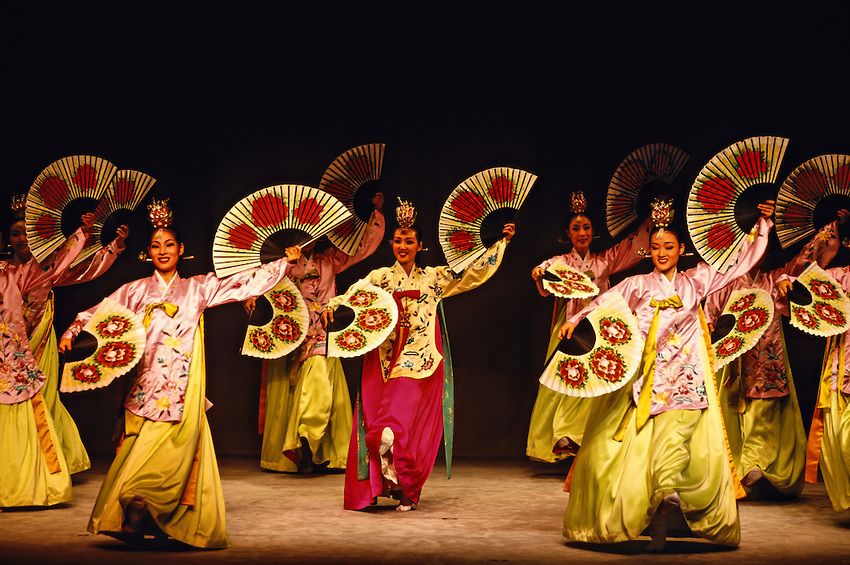 Buchaechoom is one of the most popular Korean
traditional dances performed around the world. Using fans painted with peony blossoms, female dancers
in hanboks (the traditional Korean dress) mimic flowers, butterflies, and waves.
Buchaechoom is one of the most popular Korean
traditional dances performed around the world. Using fans painted with peony blossoms, female dancers
in hanboks (the traditional Korean dress) mimic flowers, butterflies, and waves.
The Music of South Korea has evolved over the course of the decades since the end of the Korean War, and has its roots in the music of the Korean people, who have inhabited the Korean peninsula for over a millennium. Contemporary South Korean music can be divided into three different main categories: Traditional Korean folk music, popular music, or K-pop, and Western-influenced non-popular music. Traditional Korean music is referred to as gugak (Hangul: 국악), which literally means "national music", meanwhile the popular Korean music, typically referred to as K-pop in English, or gayo (가요) in Korean, is a highly commercial industry throughout Asia.
 Soccer is one of Korea’s most popular sports. The K League
(Korea Professional Football League) runs from March to November each year, with fierce competition
among 12 regional teams.
Soccer is one of Korea’s most popular sports. The K League
(Korea Professional Football League) runs from March to November each year, with fierce competition
among 12 regional teams.
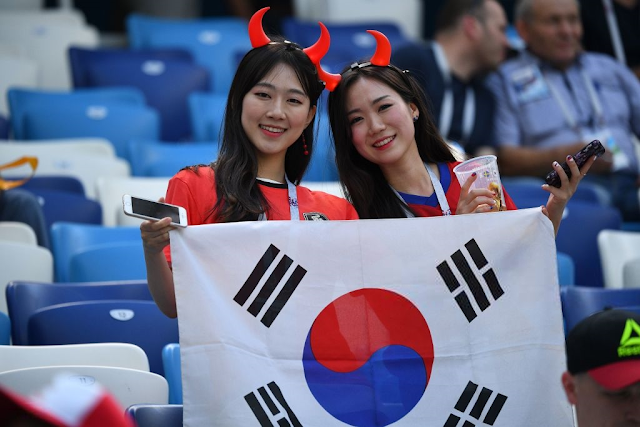 South Korea supporters wave the national flag in Russia during the
2018 World Cup.
South Korea supporters wave the national flag in Russia during the
2018 World Cup.
 Four South Korean taekwondo fighters.
Four South Korean taekwondo fighters.
South Korea has traditional sports of its own, as well as sports from different cultures and countries. Korea’s biggest contribution to the world of sports is taekwondo. It is the most recognizable Korean sport and features some of the most beautiful moves in the world of martial arts. It has been said that while most martial arts can be compared to grasshoppers and bees, taekwondo is more like a butterfly because of the grace involved in each move. But South Korea is slowly getting westernized in many aspects and that includes sports. Most South Koreans enjoy football and baseball. Some of their more traditional sports include bull fighting, wrestling and kite flying.
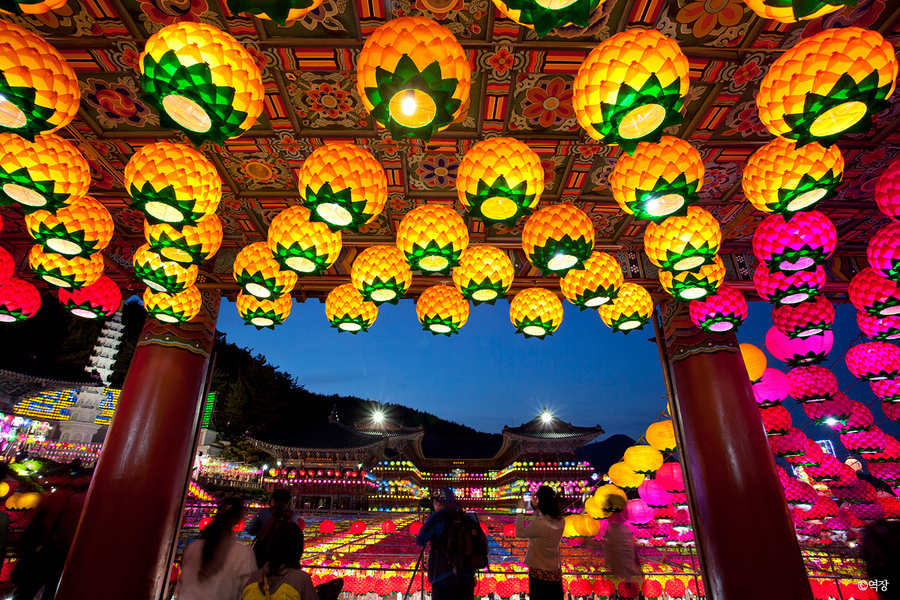 The Yeon Deung Hoe (Lotus Lantern Festival) is an annual event
that colors Korea with bright lanterns in celebration of the birth of Buddha.
The Yeon Deung Hoe (Lotus Lantern Festival) is an annual event
that colors Korea with bright lanterns in celebration of the birth of Buddha.
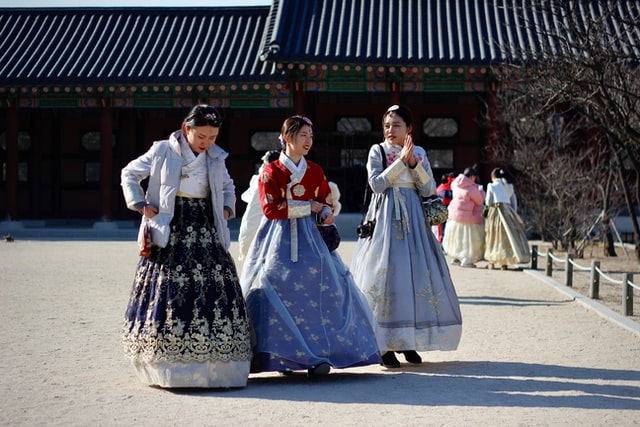 Hanbok, the traditional attire of the Korean people, has a
history as colorful as the garments themselves. Worn daily up until about a century ago, the
hanbok remains an important icon of Korea, and is still donned on special occasions and holidays.
Hanbok, the traditional attire of the Korean people, has a
history as colorful as the garments themselves. Worn daily up until about a century ago, the
hanbok remains an important icon of Korea, and is still donned on special occasions and holidays.
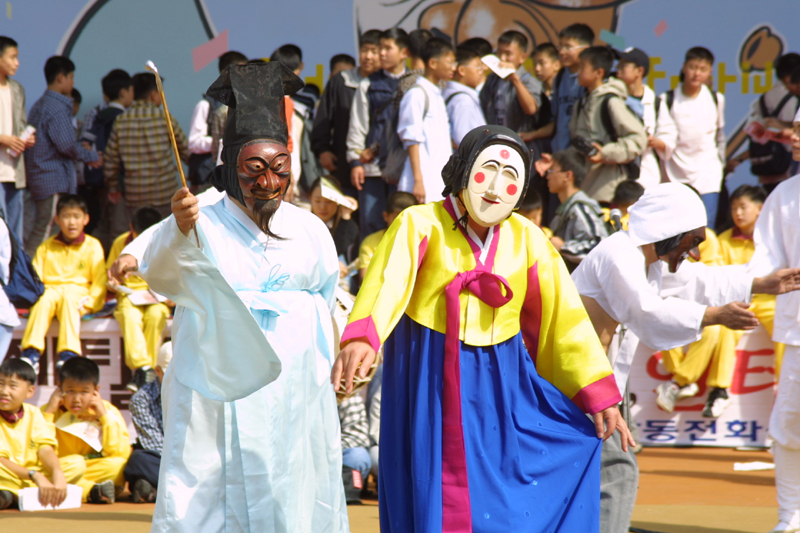 Andong International Maskdance Festival is held around the end of
September each year. Visitors not only explore Andong Hahoe, a beautiful folk village in the
countryside, but they also get to see colourful array of national and international mask dance troupes.
Andong International Maskdance Festival is held around the end of
September each year. Visitors not only explore Andong Hahoe, a beautiful folk village in the
countryside, but they also get to see colourful array of national and international mask dance troupes.
Despite South Korea’s rapid modernization, there are still plenty of ways to learn about the country’s rich history, colorful culture, and unique traditions. Perhaps no way is better than attending a festival, of which there are many throughout the year. From an internationally renowned mud festival to lesser-known gatherings that commemorate nature, food, historical events or the changing of the seasons, there’s never a lack of celebrations in this highly diverse country.